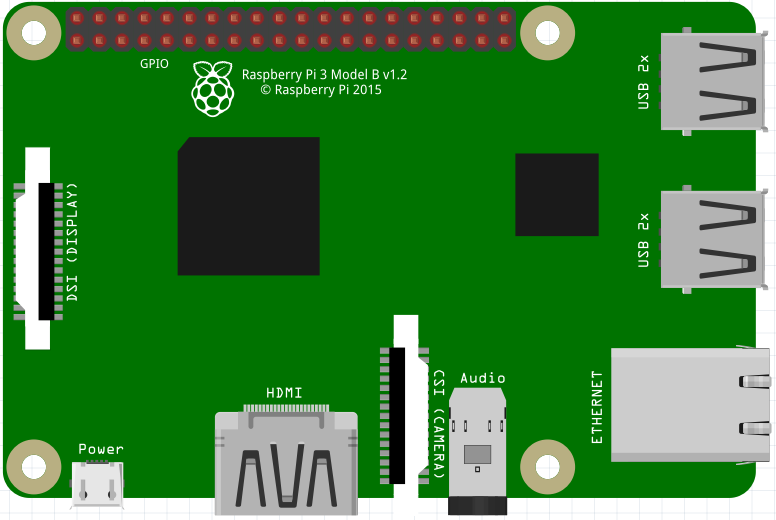Implements qt-webengine-kiosk for rendering QtWebEngine.
This is the base Nerves System configuration for the Raspberry Pi 3 Model B.
| Feature | Description |
|---|---|
| CPU | 1.2 GHz quad-core ARMv8 |
| Memory | 1 GB DRAM |
| Storage | MicroSD |
| Linux kernel | 4.19 w/ Raspberry Pi patches |
| IEx terminal | ttyS0 |
| GPIO, I2C, SPI | Yes - Elixir ALE |
| ADC | No |
| PWM | Yes, but no Elixir support |
| UART | 1 available - ttyS0 |
| Camera | Yes - via rpi-userland |
| Ethernet | Yes |
| WiFi | Yes - VintageNet |
| Bluetooth | Not yet |
The most common way of using this Nerves System is create a project with mix nerves.new and to export MIX_TARGET=rpi3.
Then, change the rpi3 system dependency to
{:kiosk_system_rpi3, "~> 1.0"}
See the Getting started guide for more information.
If you need custom modifications to this system for your device, clone this repository and update as described in Making custom systems
See the example project for more info
WiFi modules almost always require proprietary firmware to be loaded for them to work. The
Linux kernel handles this and firmware blobs are maintained in the
linux-firmware project. The firmware for the built-in WiFi module on the RPi3
hasn't made it to the linux-firmware project nor Buildroot, so it is included
here in a rootfs-additions overlay directory. The original firmware files came from
https://github.com/RPi-Distro/firmware-nonfree/blob/master/brcm80211/brcm.
Image credit: This image is from the Fritzing parts library.
This system supports storing provisioning information in a small key-value store outside of any filesystem. Provisioning is an optional step and reasonable defaults are provided if this is missing.
Provisioning information can be queried using the Nerves.Runtime KV store's
Nerves.Runtime.KV.get/1
function.
Keys used by this system are:
| Key | Example Value | Description |
|---|---|---|
nerves_serial_number |
"1234578"` | By default, this string is used to create unique hostnames and Erlang node names. If unset, it defaults to part of the Raspberry Pi's device ID. |
The normal procedure would be to set these keys once in manufacturing or before deployment and then leave them alone.
For example, to provision a serial number on a running device, run the following and reboot:
iex> cmd("fw_setenv nerves_serial_number 1234")This system supports setting the serial number offline. To do this, set the
NERVES_SERIAL_NUMBER environment variable when burning the firmware. If you're
programming MicroSD cards using fwup, the commandline is:
sudo NERVES_SERIAL_NUMBER=1234 fwup path_to_firmware.fwSerial numbers are stored on the MicroSD card so if the MicroSD card is replaced, the serial number will need to be reprogrammed. The numbers are stored in a U-boot environment block. This is a special region that is separate from the application partition so reformatting the application partition will not lose the serial number or any other data stored in this block.
